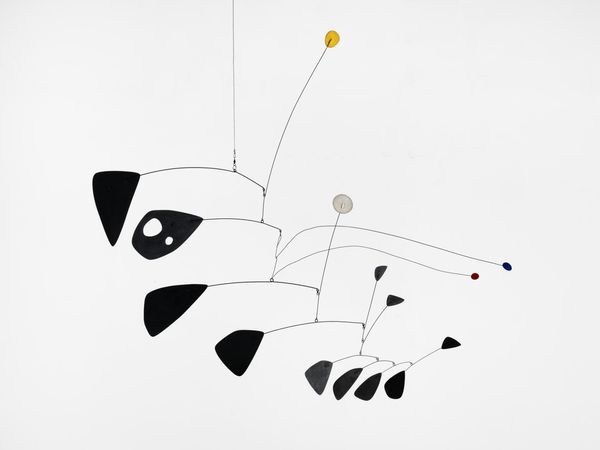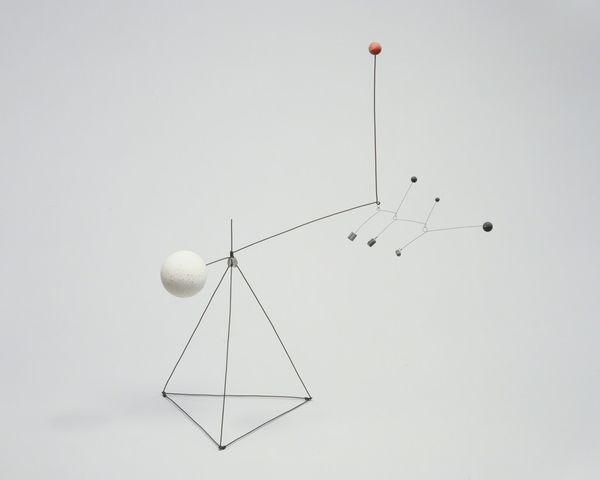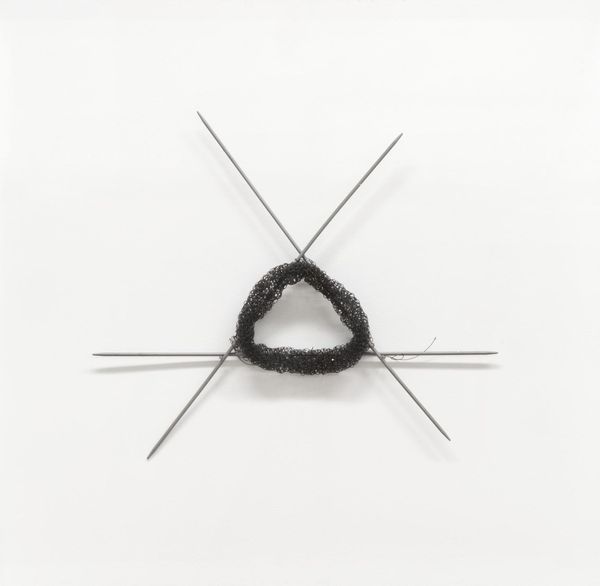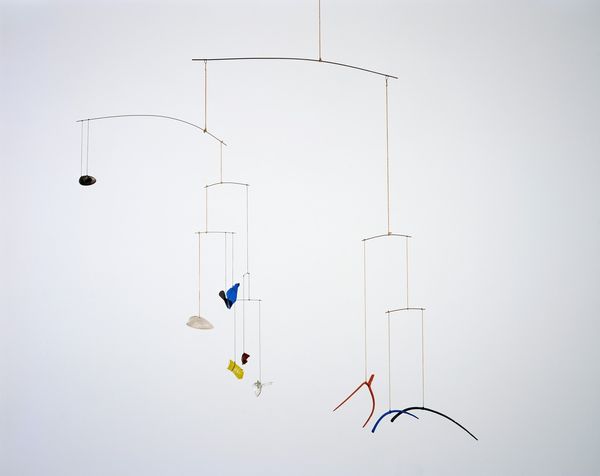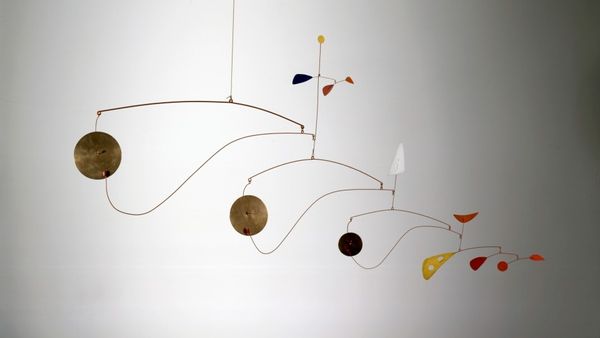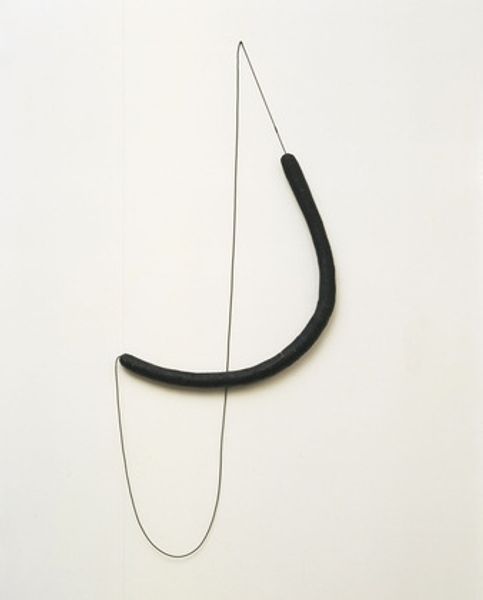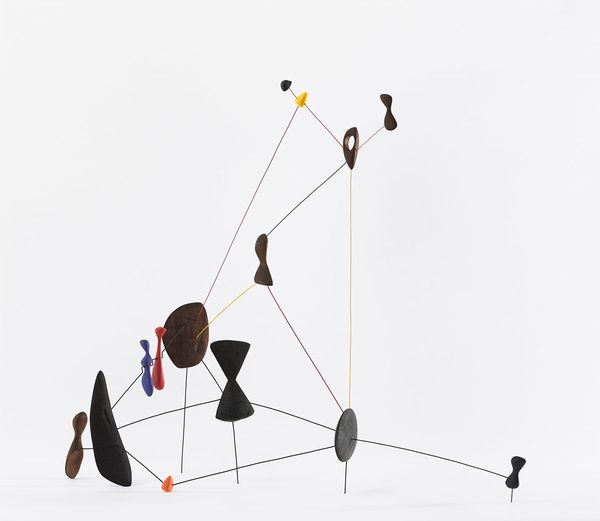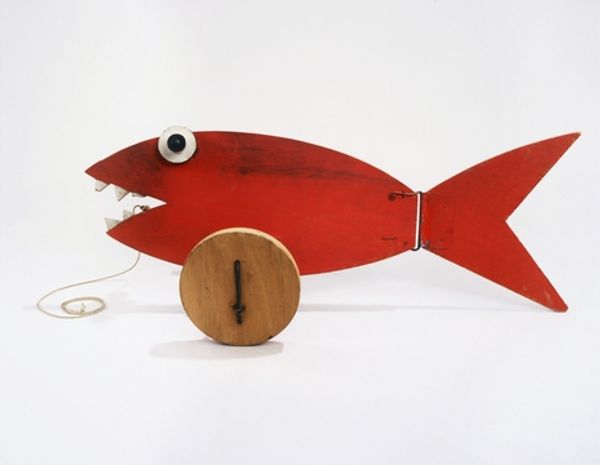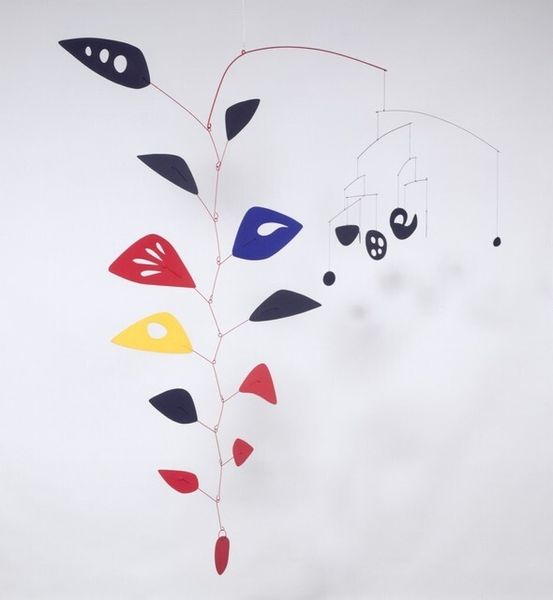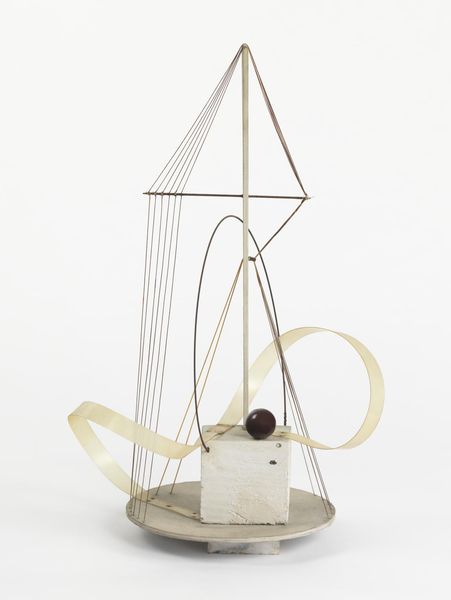
metal, sculpture, mobile
#
abstract-expressionism
#
shape in negative space
#
circular oval feature
#
metal
#
white clean appearance
#
silhouette design
#
repetition of white
#
leaf
#
minimal pattern
#
geometric
#
sculpture
#
white focal point
#
animal silhouette
#
mobile
#
abstraction
#
line
#
round circular shape
#
positive shape
Copyright: Alexander Calder,Fair Use
Editor: This delicate mobile is "FISH," created by Alexander Calder in 1945. It appears to be made of metal, formed into a simple, elegant fish outline. It strikes me as incredibly light and almost playful, despite its minimalist style. How do you interpret its significance? Curator: Well, in viewing it through a historical lens, particularly considering Calder's place within the art world, several things become clear. His mobiles were radical departures from static sculpture. How do you think the cultural context of the 1940s influenced the public's reception of such innovative work? Editor: I can imagine that right after the war, its lightness must have seemed really optimistic. The simplicity and abstract form is soothing in contrast to the intensity of the war period. Curator: Exactly! And it's important to remember that museums and galleries play a huge role in shaping our understanding of art. Did the public understand Calder's exploration of motion and space right away? No, of course not. Editor: Probably not. Curator: But through exhibitions and critical discourse, Calder’s mobiles, this one especially, became celebrated. The simple wire bending becomes a political act, pushing back against traditional ideals of permanence and monumentality at the time. Does it feel that way for you at all? Editor: I see what you mean, but not immediately, which tells me about my biases, that "monumentality" seems "more important" until I dig a little deeper. The way institutions validated his work shows how museums can redefine artistic values, I suppose! Curator: Precisely. The interplay between the artwork, the socio-political environment, and the institutions is where much of the meaning resides. Considering those influences can definitely make this particular work richer. Editor: It really does! Thinking about the socio-political side, instead of just form and aesthetic is really helpful. Thanks!
Comments
No comments
Be the first to comment and join the conversation on the ultimate creative platform.
